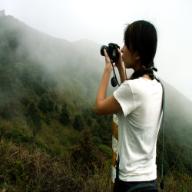拜託~~~
最好有埋MAP la!!!(英文啊~)
thx~!!!
有冇人有屏山嘅英文資料啊?
2007-01-04 4:38 am
回答 (2)
2007-01-04 4:56 am
✔ 最佳答案
Ping Shan (屏山) is an area in the New Territories of Hong Kong. It is located west of Yuen Long Town and Shui Pin Wai, and south of Tin Shui Wai. Administratively, it is part of Yuen Long District.Although sandwiched between Yuen Long New Town and Tin Shui Wai New Town, the area remains largely rural and villages spreads in the area. Tsui Sing Lau Pagoda and sea shore was once splendid picture surviving till early 20th century. Ping Shan later became landlocked due to sedimentation along the estuary in water north.
Sights
The Ping Shan Heritage Trail was opened on 12th December, 1993. It includes following historic buildings:
Tsui Sing Lau Pagoda
It is Hong Kong's only ancient pagoda. The name in Chinese means "Pagoda of Gathering Stars".
The Pagoda was built by Tang Yin-tung, the seventh generation ancestor, more than 600 years ago according to the genealogy of the Tang clan of Ping Shan. It is a three-storey hexagonal-shaped green-brick structure and it is about thirteen metres high. On the top floor, a statue of Fui Shing (Champion Star) is worshipped.
The pagoda was built to improve fung shui of the locality so that flooding disasters were prevented to the village. It was also believed that its auspicious location, which is in alignment with Castle Peak, would ensure success for clan members in the Imperial Civil Service Examination. In fact, the Tang clan of Ping Shan has produced numerous scholars and officials.
Tang Ancestral Hall
It is one of the largest ancestral halls in the territory. It was constructed by Tang Fung-shun, the fifth generation ancestor of Tang Clan about 700 years ago. It is the main ancestral hall of the Tang clan of Ping Shan. It is a three-hall structure with two internal courtyards. The wooden brackets and beams of the three halls are carved with auspicious Chinese motifs. Shiwan dragon-fish and pottery unicorns decorate the main ridges and roofs.
There are ancestral tablets at the altar at the rear hall.
This ancestral hall is still used regularly for worship and celebrations of traditional festivals and ceremonies, as well as a meeting place for the Tang clan of Ping Shan.
Yu Kiu Ancestral Hall
Yu Kiu Ancestral Hall is situated adjacent to Tang Ancestral Hall. There are three halls and two internal courtyards in the compound. The layout and design of Yu Kiu Ancestral Hall is the same as Tang Ancestral Hall.
It was built in the early sixteenth century by two eleventh generation brothers of the Tang clan of Ping Shan: Tang Sai-yin (alias Yu-sing) and Tang Sai-chiu (alias Kiu-lum). Apart from serving as an ancestral hall, the building was also used as a teaching hall for youngsters of Ping Shan. It was occupied by a primary School from 1931 to 1961. During the Guangzu reign (1875-1908) of Qing dynasty, The last major renovation of the building probably took place; it was indicated by the engraved characters on the stone tablet above the main entrance.
Sau Choi Mansion
Sau Choi Mansion is a 160 years old mansion. It was handed down for six generation. As its former residents, Tang Shut-hing and Tang Tai-shing obtained the official posts through imperial civil service examination, the house is now called Sau Choi Mansion[1]
The house was refurnished and now houses relics and information Tang clan. Tours are able to be arranged on Saturdays, Sundays and Public Holidays.
* Sheung Cheung Wai, a walled village
* Kun Ting Study Hall - built for students preparing for the imperial civil service examination
* Hung Shing Temple
* Yeung Hau Temple together
* several other Chinese buildings.
Transport
Ping Shan is served by the Tin Shui Wai Station of the KCR West Rail and several stations of the KCR Light Rail.
參考: Wikipedia
2007-01-04 4:53 am
Ping Shan has one of the longest recorded histories amongst districts in Hong Kong. A lineage of the Tang clan, one of the "Five Great Clans" in the New Territories, can be traced back to the twelfth century. Numerous elegant structures built in those days remain today, bearing testimony to historical and social development over the past centuries.
This Trail, meandering through Hang Mei Tsuen, Hang Tau Tsuen and Sheung Cheung Wai, is about one km long. It links up a number of traditional Chinese structures within easy walking distance, providing visitors with an opportunity to recapture aspects of life in the New Territories in the old days in a convenient half-day excursion.
Unique monuments along the trail include Tsui Sing Lau Pagoda (Hong Kong's only ancient pagoda), Tang Ancestral Hall (one of the largest ancestral halls in the territory), Sheung Cheung Wai (a walled village), Kun Ting Study Hall (built for students preparing for the Imperial Civil Service Examination), Hung Shing Temple and Yeung Hau Temple together with several other Chinese buildings.
屏山是香港歷史最悠久的地區之一,新界五大族之一的鄧氏其中一支早於十二世紀時已定居於此。多類瑰麗建築先後興建,不少至今依然屹立,見証過往的歷史和社會發展。
屏山文物徑蜿蜒於坑頭村、坑尾村和上璋圍間,長約一公里,將多座典型中國傳統建築接連起來,信步可達,使市民只須花半天遊覽時間,便可領略到過往新界的傳統生活面貌。
文物徑沿線的獨特古蹟包括聚星樓 (香港唯一的古塔)、鄧氏宗祠 (本港最大的祠堂之一)、上璋圍 (一古圍村)、覲廷書室 (專為村中子弟準備科舉考試而建)、洪聖宮、楊侯古廟與及其他多所傳統建築。
This Trail, meandering through Hang Mei Tsuen, Hang Tau Tsuen and Sheung Cheung Wai, is about one km long. It links up a number of traditional Chinese structures within easy walking distance, providing visitors with an opportunity to recapture aspects of life in the New Territories in the old days in a convenient half-day excursion.
Unique monuments along the trail include Tsui Sing Lau Pagoda (Hong Kong's only ancient pagoda), Tang Ancestral Hall (one of the largest ancestral halls in the territory), Sheung Cheung Wai (a walled village), Kun Ting Study Hall (built for students preparing for the Imperial Civil Service Examination), Hung Shing Temple and Yeung Hau Temple together with several other Chinese buildings.
屏山是香港歷史最悠久的地區之一,新界五大族之一的鄧氏其中一支早於十二世紀時已定居於此。多類瑰麗建築先後興建,不少至今依然屹立,見証過往的歷史和社會發展。
屏山文物徑蜿蜒於坑頭村、坑尾村和上璋圍間,長約一公里,將多座典型中國傳統建築接連起來,信步可達,使市民只須花半天遊覽時間,便可領略到過往新界的傳統生活面貌。
文物徑沿線的獨特古蹟包括聚星樓 (香港唯一的古塔)、鄧氏宗祠 (本港最大的祠堂之一)、上璋圍 (一古圍村)、覲廷書室 (專為村中子弟準備科舉考試而建)、洪聖宮、楊侯古廟與及其他多所傳統建築。
收錄日期: 2021-04-13 15:30:50
原文連結 [永久失效]:
https://hk.answers.yahoo.com/question/index?qid=20070103000051KK04279

